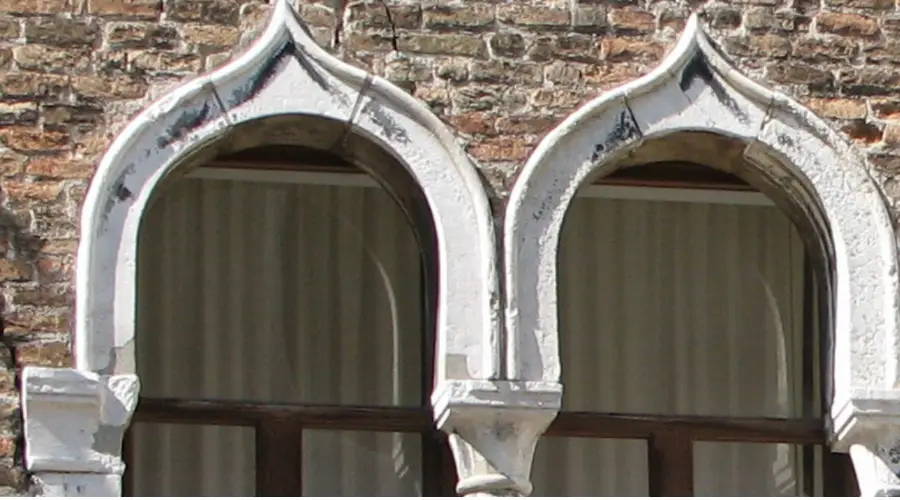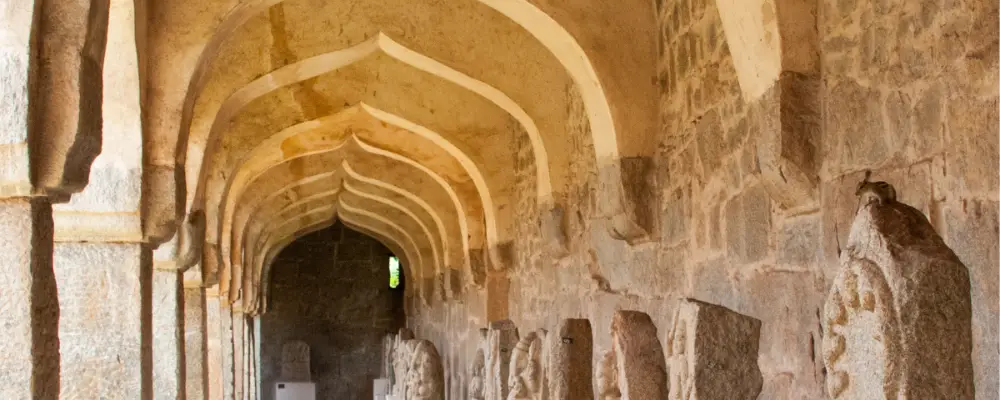Nowadays, people widely concentrate on improving the aesthetic value of their construction. Similar to strength and stability, the appearance also plays a pivotal role in the structures. You might have several decorative ideas, but they are not more remarkable than arches. They can be used often everywhere from ancient to modern construction according to their design requirements.
Learning about its types can help you make an informed decision. One of the popular types that we are going to discuss is the ogee arch. Stay tuned to understand the detailed overview of the ogee arch, including its features, advantages, and applications.
Overview of Ogee Arch

An ogee is a type of arch characterised by its S-shape or double curve formed by two opposing curves. One is concave and the other is convex, meeting at the top of the arch. It can be found in many architectural designs to describe the curvature and make it more visually striking.
This arch type is primarily known for its pleasing rhythm and flow and looks extremely versatile. It has a close relationship with Gothic architecture, which is used extensively in buildings and decorative elements.
Features of Ogee Arch
An ogee arch can be easily identified by its distinctive features as listed in the following:
Double Curve: The double curve in an arch is the most defining feature and helps highlight the whole building structure. It consists of a convex curve followed by a concave curve. The shape looks extremely elegant and detailed.
Opposite Direction: The edge of the overall curve points in both directions, which seems dynamic and creates visual interest. The curves arranged in a series set the construction apart from ordinary ones.
Point of Inflection: The point of inflection denotes the point where the curve transforms from convex to concave in the ogee arch. This point is quite important in improving the overall shape of the arch.
Structural Efficiency: Since the ogee arch is a complex shape, the design is structurally sound and efficient. Additionally, it helps distribute the weight evenly throughout the structure, making it ideal for structures with large spans and heavy loads.
Advantages and Disadvantages of Ogee Arch
Advantages
Let’s uncover the significance of the ogee arch:
Versatile: Ogee arches are extremely versatile and are used in a wide range of applications, including bridges, doorways, arcades, windows, and other decorative elements. The advantage is that this arch style can fit different styles and periods of architecture.
Structural Efficiency: Despite its complex shape, the ogee arch possesses outstanding structural efficiency. As stated earlier, it contains a double curve, which helps distribute the weight and load evenly throughout the structure. This arch type is ideal for heavy loads and large spans.
Water Drainage: The Ogee arch is a curved surface that sheds water quickly from the structure. It typically reduces the risk of mould growth and water damage on the roof and other surfaces.
Disadvantages
Complex Design: Ogee arch designs are complex to construct, resulting in increased time and costs. Unlike simpler arch forms, it includes curved shapes with concave and complex points that need more labour time and resources to design.
Maintenance Challenges: Repair and maintenance can be a difficult part when compared to other arch types. Due to its complex shape and risky design, it requires specialised skills and materials every time.
Skilled Professionals: Building an ogee arch needs professional labourers with specialised knowledge and experience in this type of architecture. But this type of construction is rare, so it is challenging to find people with such specialised skills.
Higher Material Costs: To perfectly achieve this complex shape, it requires more materials or resources than a simpler arch form. It increases the overall budget for construction beyond what you estimated.
Applications of Ogee Arch
Ogee arches can be a precise choice for various architectural styles, adding sophistication and elegance to the buildings. Here are some of the common applications:
- Ogee arch is often used in doorways and windows for adding a sense of touch and a visually appealing look.
- It can be seen in some historic bridges, which contributes to achieving a unique aesthetic appeal.
- Ogee arch can be an excellent choice for interior design elements such as niches, doorways, and decorative moldings.
- The shape and style of the ogee arch can be found in many furniture designs, especially in the frames and legs of tables and chairs.
- To create arcades, the rows of ogee arches are arranged and supported by columns or piers.
Step-by-Step Construction of Ogee Arch
Here are the steps involved in the construction of an ogee arch. This guide will surely help you achieve the best results:
- Draw a horizontal line, which acts as a base for your arch.
- Mark the center from the middle point of this line.
- It’s time to determine the height of your arch. Draw a vertical line upwards from the center point as the height you want.
- By using a compass, create the outer curve from the ends of the baseline. Ensure this curve meets the top of the vertical line that you have drawn for the arch height.
- Draw two more inner curves from the point where the outer curve meets the vertical line. These curves should meet the point on the horizontal line, which is the base of the arch.
- Connect the end points of the outer curves to the inner curves to meet the horizontal line.
Final Lines
The usage of ogee arches is commonly less frequent because of their complex design. Still, it can be seen in many architectural designs, from traditional to modern constructions. Beyond their strength and durability, they are a top-notch choice in improving elegance and creating a visually striking appearance.
FAQs
Ogee is a specific arch type often found in moldings and arches. It is characterised by its S-shape with a pointed top. Cyma is a broader term used for any curved designs that include both the concave and convex sections.
A reverse ogee arch has a distinctive S-shaped curve, containing a concave upper curve and a convex lower curve. This unique style adds a visually striking appearance to any building and architecture, often found in gothic and Islamic architecture.
They are commonly used in windows, arcades, doorways, and decorative elements. Beyond that, they are found in:
Gothic architecture
Islamic architecture
Gothic revival architecture

